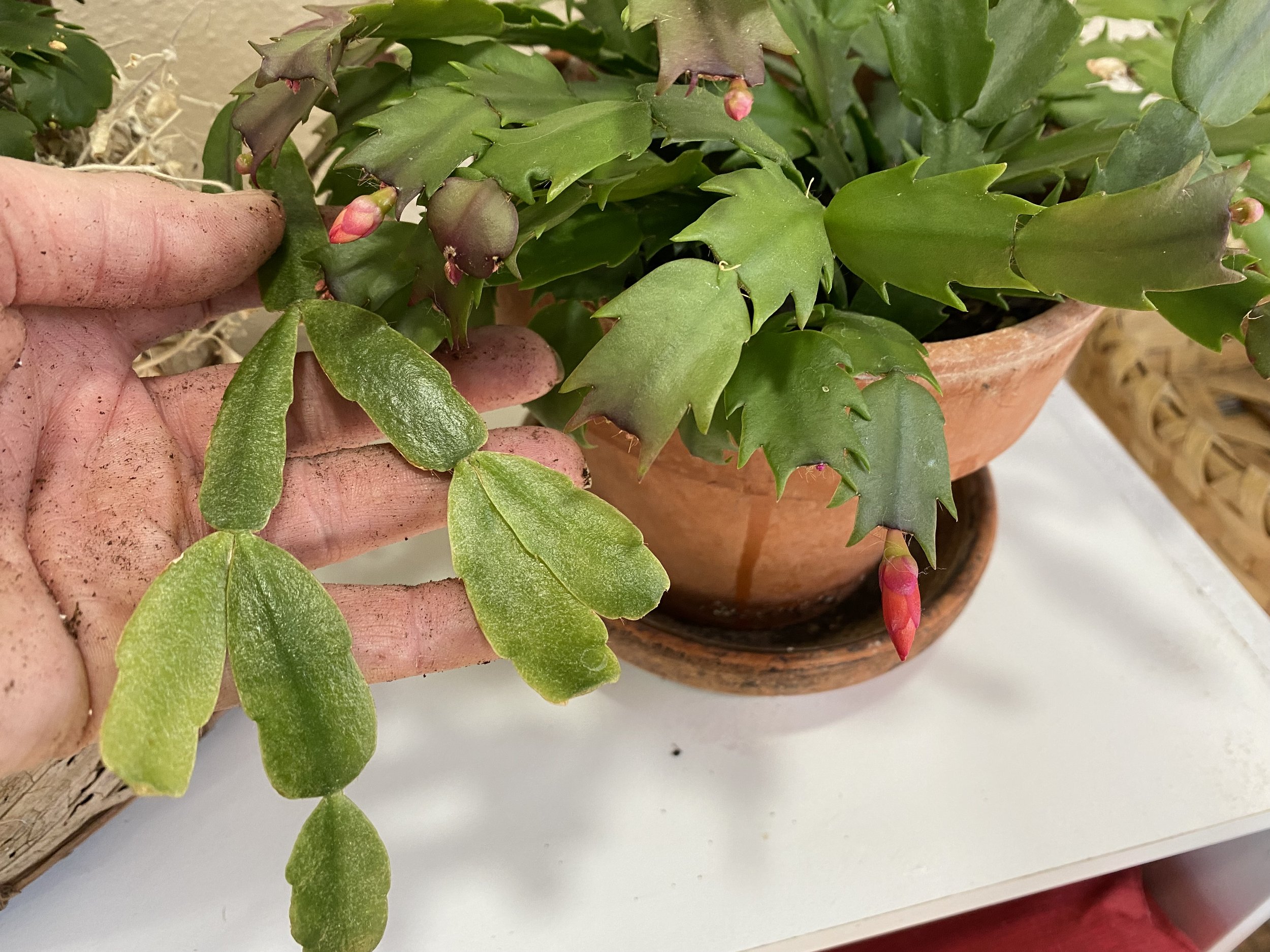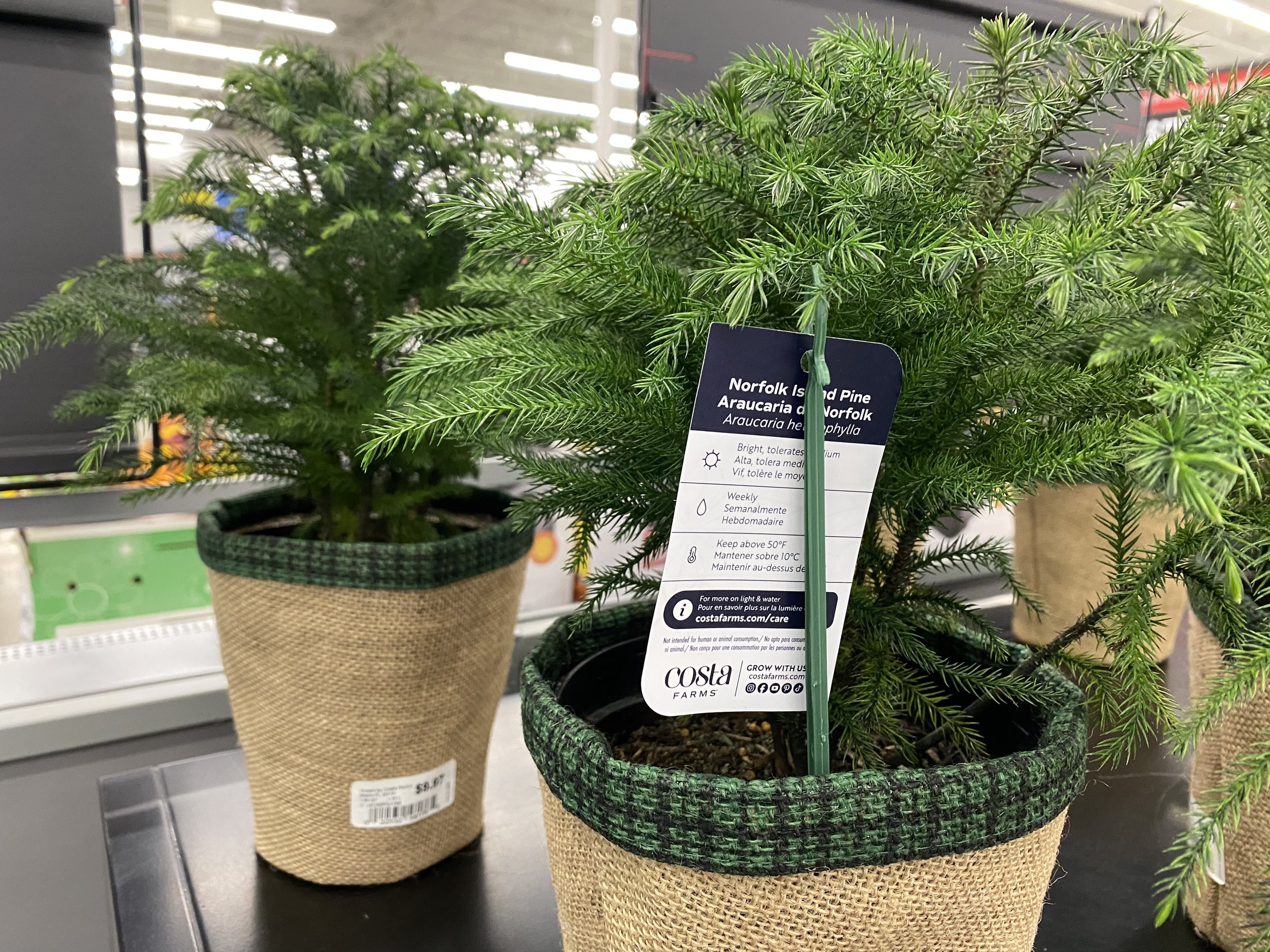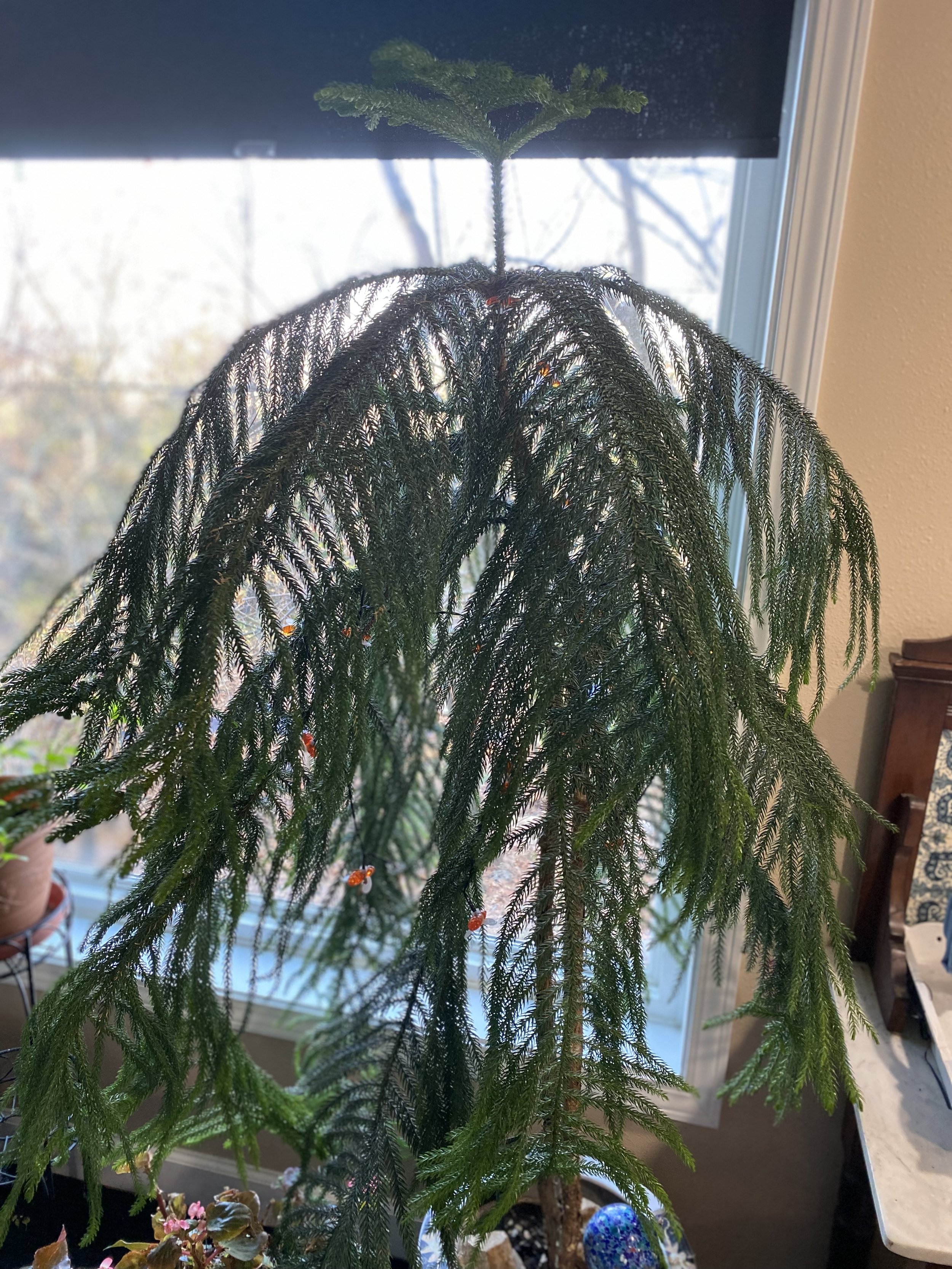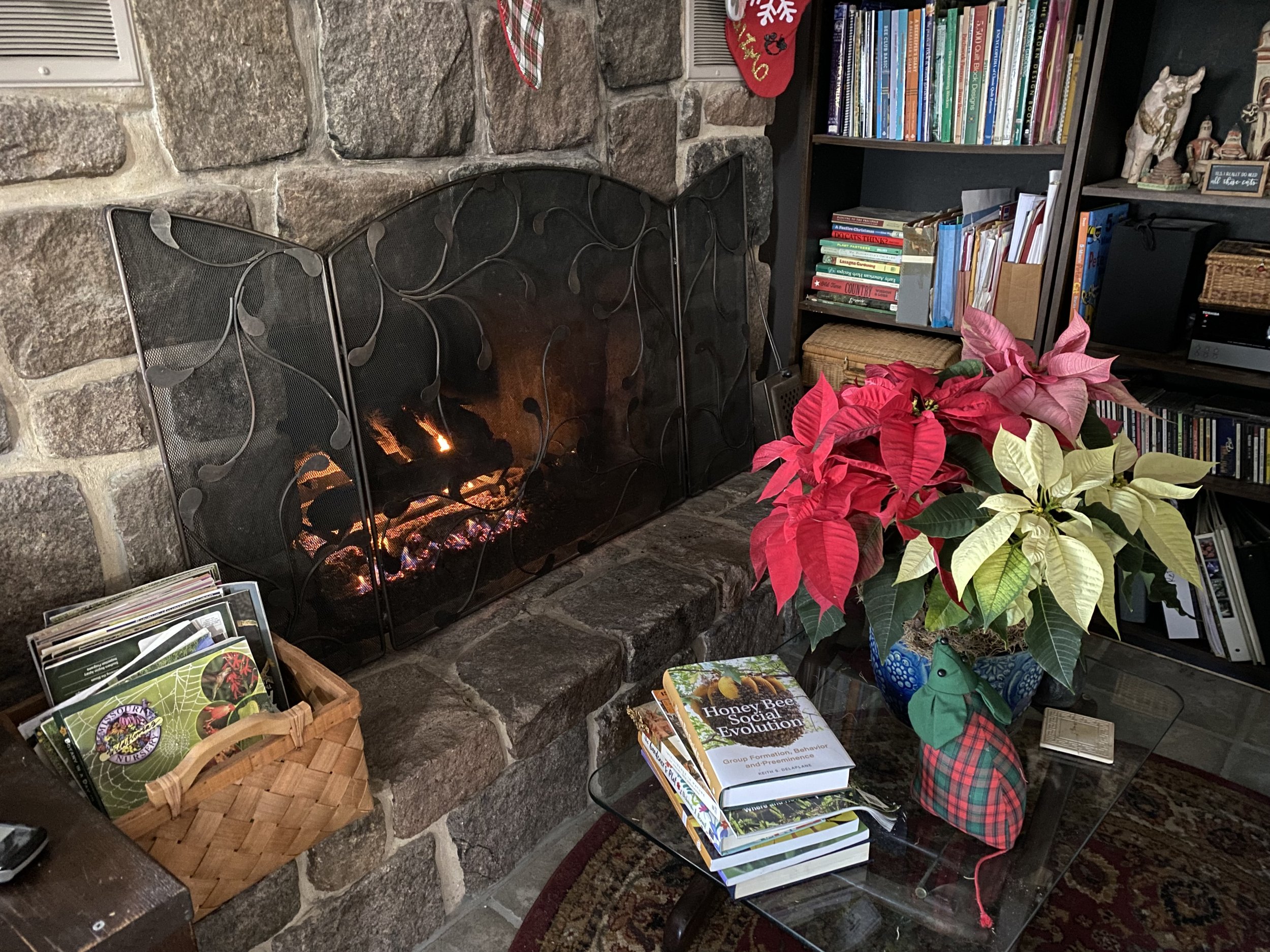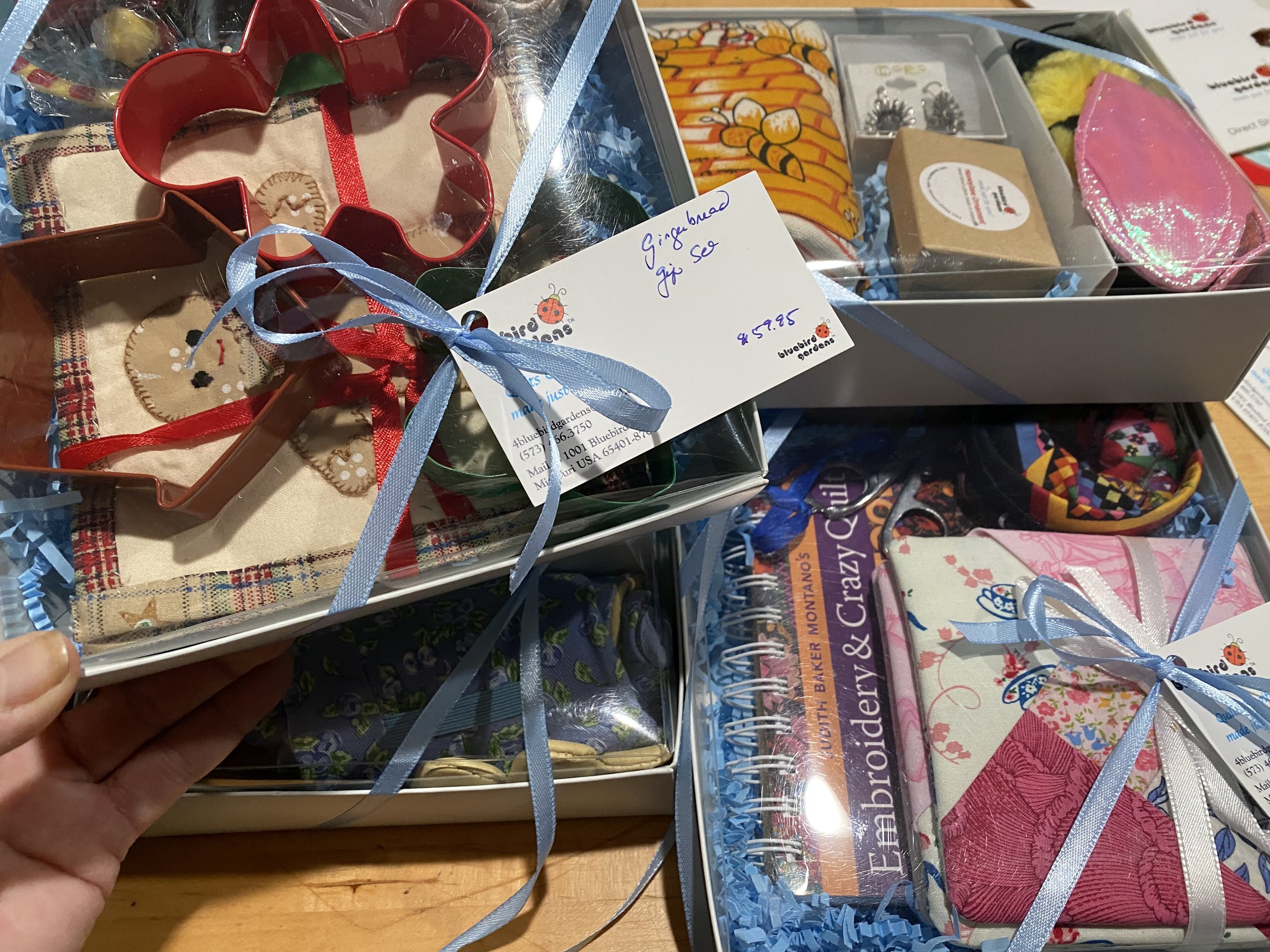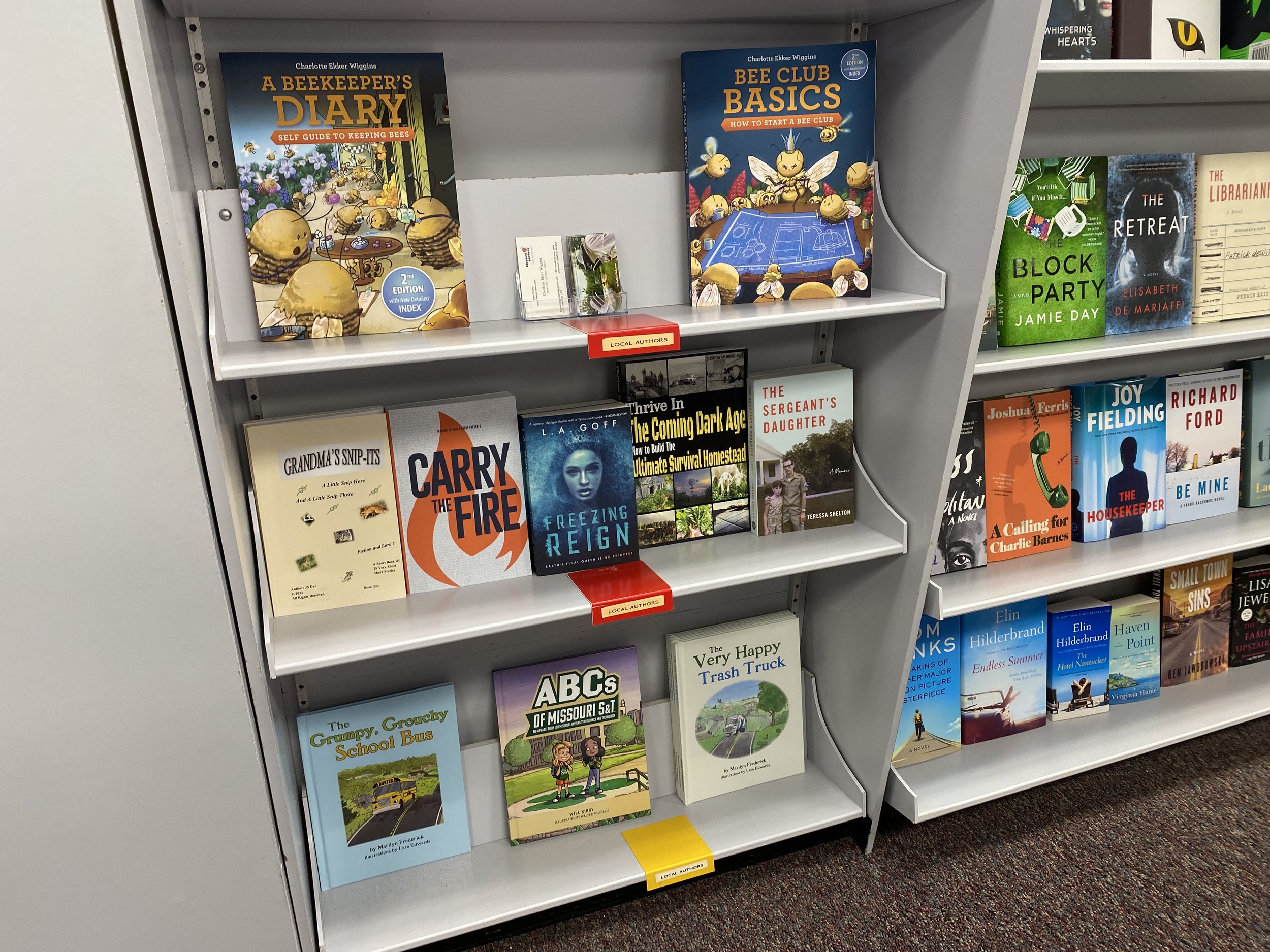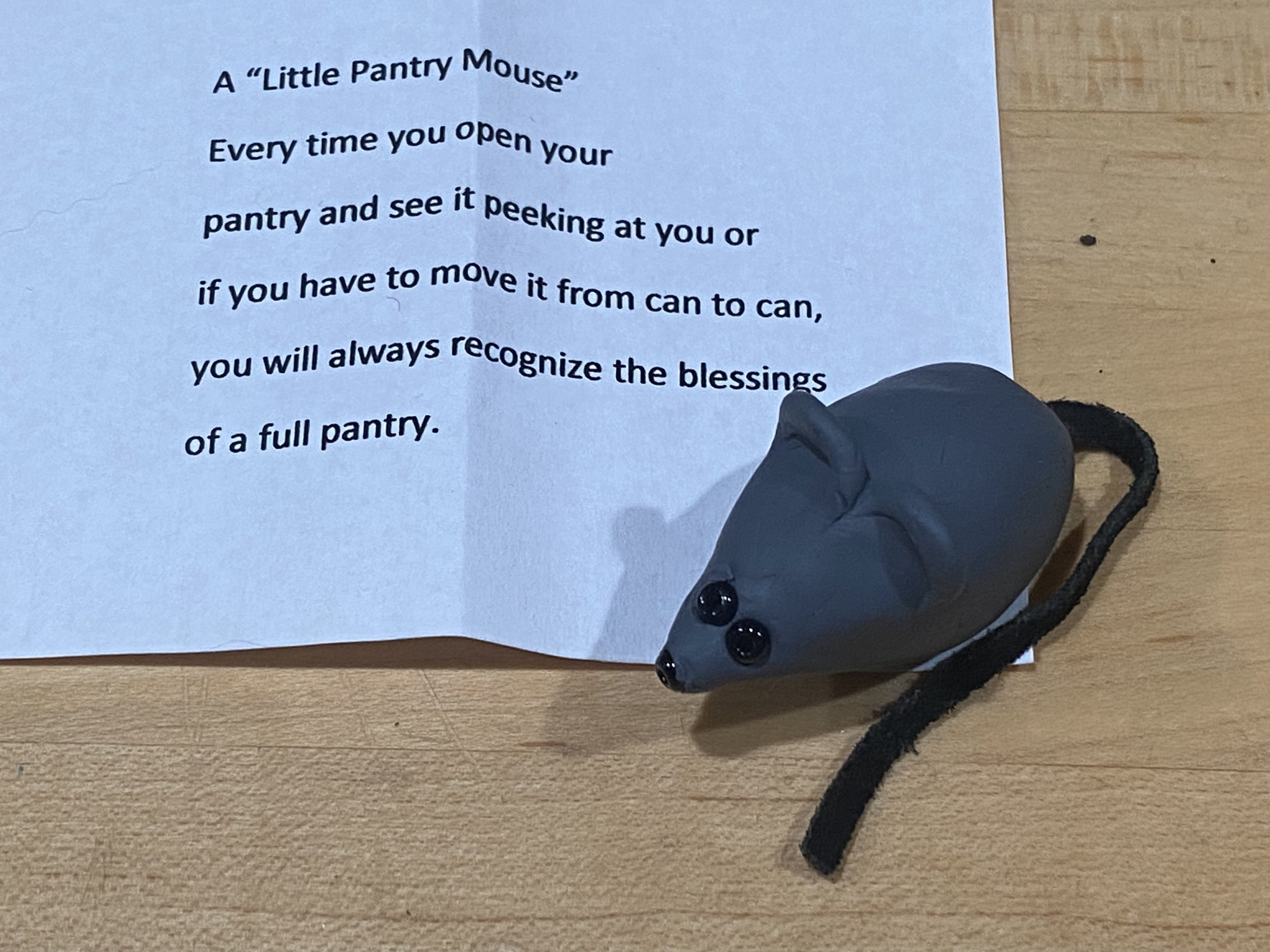Thanksgiving and Christmas Cactus Differences
/on left, christmas cactus (smooth edges) on right, thanksgiving cactus (horns on edges) (Charlotte Ekker Wiggins photo)
“Charlotte I love Christmas Cactuses but are Thanksgiving and Christmas Cactuses the same?” — Emily
Are Thanksgiving and Christmas Cactus the Same?
Christmas cactus (Schlumbergera x buckleyi) and Thanksgiving cactus (Schlumbergera truncata) are both popular holiday plants known for their vibrant blooms and ease of care.
While they are similar in many ways, there are distinct differences between the two species:
Origin and Natural Habitat:
Christmas Cactus: Christmas cacti are native to the cloud forests of Brazil. They have flattened stems with scalloped edges and are known for their pendulous flowers, which bloom in a variety of colors including red, pink, orange, white, and purple.
Thanksgiving Cactus: Thanksgiving cacti are native to the coastal mountains of southeastern Brazil. They have pointed, claw-like projections on their stems and typically bloom in shades of pink, red, white, or purple.
Leaf Segments:
Christmas Cactus: The stem segments of Christmas cacti have rounded, scalloped edges.
Thanksgiving Cactus: The stem segments of Thanksgiving cacti have pointed, claw-like projections.
Blooming Period:
Christmas Cactus: As the name suggests, Christmas cacti bloom in late fall to early winter, usually around December. The blooming period can extend into January.
Thanksgiving Cactus: Thanksgiving cacti bloom slightly earlier, typically in late November to early December, around the Thanksgiving holiday, hence the name.
Leaf Segments:
Christmas Cactus: The stem segments of Christmas cacti have rounded, scalloped edges.
Thanksgiving Cactus: The stem segments of Thanksgiving cacti have pointed, claw-like projections.
Flower Shape:
Christmas Cactus: Christmas cactus flowers have a more tubular shape, with pointed petals that often flare out at the tips.
Thanksgiving Cactus: Thanksgiving cactus flowers are usually more symmetrical and have a more rounded, crab-claw shape.
Cultural Requirements:
Both plants require similar care, including well-draining soil, indirect light, and regular watering. They prefer slightly humid conditions and benefit from occasional misting. During the blooming season, they require cool temperatures and shorter daylight hours to encourage flowering.
Propagation:
Both Christmas and Thanksgiving cacti can be easily propagated from stem cuttings. Simply cut a healthy segment of the plant, allow it to callous for a few hours, then plant it in moist soil. Given the right conditions, the cutting will develop roots and grow into a new plant.
For more tips on gardening, beekeeping, cooking and easy home decor, subscribe to my weekly Garden Notes.
Charlotte

